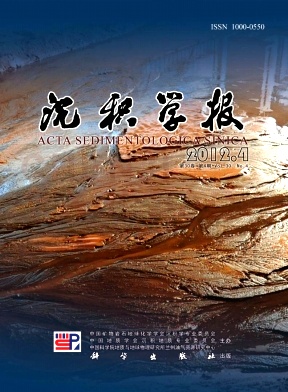Systematic Analysis of Geotemperature Influencing on Migration and Accumulation of OilGas Fluids
- Publish Date: 2012-08-10
-
Key words:
- geotemperature /
- influence
Abstract: As poolforming energy parameters, geotemperature and pressure influence the whole process from oilgas generating, migrating and accumulating to dissipating. The controlling mechanisms of geotemperature on oilgas generated and geopressure on migrating have been investigated, while influences of geotemperature on oilgas migrating and accumulating have not been considered sufficiently. In order to uncover geotemperature influence on migrating and accumulating of oil and gas, physical, chemical and physical chemical mechanisms during oilgas migrating and accumulating have been investigated systemically. After these investigating and analyzing, a conclusion that each reservoiring processes of oil and gas are influenced by geotemperature has been gained. There are two types of influencing mechanisms of geotemperature on oilgas migrating. Proving dynamic and driving oil and gas directly is the first mechanism. Inhomogeneous distribution of geotemperature could provide heatstress which drives oil and gas migrating directly. According to the heat stress theory, if temperature differences exist among different parties of a same body, heat stress would appear immediately. As giant geological bodies, stratums not for a moment have homogeneous temperature. Those eternal temperature differences imply timeless heat stress which has been and will be driving oil and gas migrating from higher temperature area to lower temperature area. The inference that temperature could drive oil and gas has been testified by Qiu Nansheng's experiment, in which the phenomenon of oil migrating from the higher temperature end of tube to the lower end was observed. In oilgas migrating process, geoheat could not only provide power for oilgas migrating, but also control migrating efficiency by changing some physical parameters, such as sorption, diffusivity and solubility. According to present relative achievements about accumulation of oil and gas, geotemperature not only partly influences accumulating location of oil and gas, but also mainly controls oil and gas's accumulating phases. Where oil and gas will accumulate in is determined by many factors, such as source rock, reservoir, capping, migrating process, preserved process, etc. However, these factors are more or less influenced by geotemperature. Based on phase of reservoired oil and gas, reservoirs could be classified into heavy oil reservoir, normal oil reservoir,condense oil reservoir,oilgas reservoir and gas reservoir. Phase of reservoired oil and gas is determined by their primordial phase and subsequent change. Geotemperature is one of the two primary factors that determine primordial phase of oil and gas (another factor is the organic materials type of source rock). According to present data gain from experiments and experiences, reflection of vitrinite(Ro %), the directly decisive parameter of primordial phase of oil and gas, is a function of geotemperature. In Zhanhua sag, when geotemperature is under 100℃ (Ro<0.5%), the source rock in Es3x generates biogas only. From 100℃ to 175℃(Ro is from 0.5% to 1.35%), routine oil is the main produce. When geotemperature increase to 175℃(Ro>1.35%), produce of the source rock is condensable oil containing with wet gas. When geotemperature is above 200℃(Ro>2.0%), produce of the source rock will be dry gas only. In summary, in accumulating, distributing situation and accumulating phase of oil and gas are influenced by geotemperature (associating with pressure). Two facts are noteworthy, the first one is that geotemperature is not only, but one of many factors which control reservoiring processes of oil and gas. According to the authors, geotemperature has inherent relationships with geopressure and tectonic stress, and the three factors always control oil and gas migrating and accumulating cooperatively. Another one is that the oil and gas reservoirs we are looking for all reservoired during geological time. It is the paleogeotemperature that influenced oil and gas's migrating and accumulating process. So paleogeotemperature should be estimated before analyzing influences of geotemperature on oilgas migrating and accumulating.
| Citation: | Systematic Analysis of Geotemperature Influencing on Migration and Accumulation of OilGas Fluids[J]. Acta Sedimentologica Sinica, 2012, 30(4): 747-754. |






 DownLoad:
DownLoad: